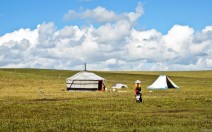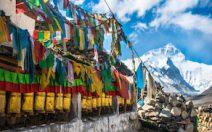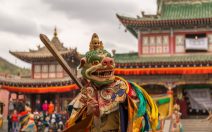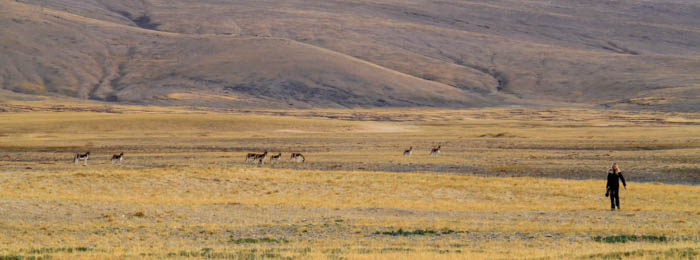Occupying almost quarter of China’s land territory, commonly called “third pole” and “roof of the world”, the Tibet plateau has an average elevation exceeding 4500m above sea level. It encompasses all of the Tibet Autonomous Region and the whole Qinghai province and extends into western Sichuan province and southern Uygur Autonomous Region of Xinjiang. The region lies between the Kunlun Mountains and its associated ranges to the north and the Himalayas and Karakoram Range to the south and southwest, respectively; it extends eastward to the Daxue Mountains and, farther south, the northern and central portions of the Hengduan Mountains.
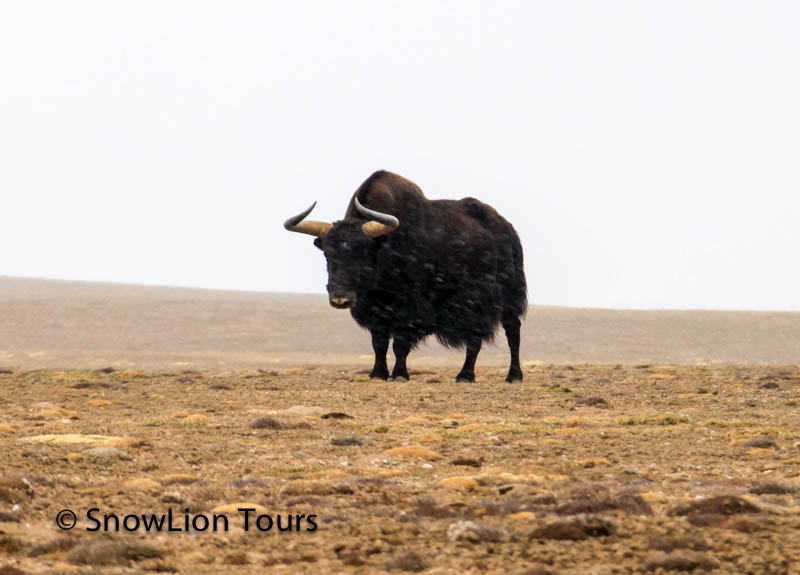
Wild Yak is the biggest wild animal in Tibet
Tibet plateau stretches 1800km north to south and 2500km east to west, with an area of 2,500,000square kilometres, the Tibetan Plateau originates the headwaters of the drainage basins of most of the streams in surrounding regions. Its tens of thousands of glaciers and other geographical and ecological features storing water and maintaining flow.
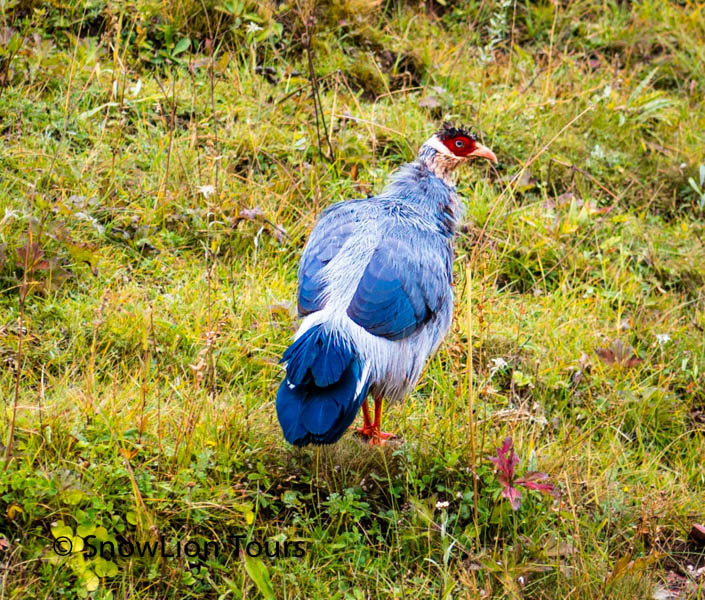
Tibet Eared Pheasant, one of the beautiful bird in Tibet
The Tibetan plateau serves a variety of ecosystem despite of its high elevation and low precipitation. And Tibet plateau also is home to hundreds and thousands of species. A total 12,000 species of vascular plant, 5,000 species of epiphytes, 210 species of mammals, and 532 species of birds have been recorded to covered in the areas of plateau. The plateau is also one of the centers of species formation and differentiation in the world to protect the biodiversity of the plateau, about 80 nature reserves have been designated, of which 45 are national or provincial, covering about 22% of the plateau area. Most of the nature reserves are distributed in the southeastern part of the plateau.
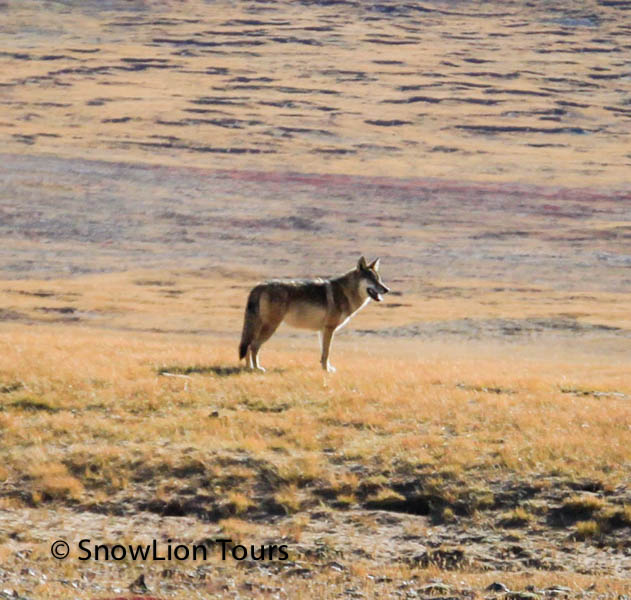
Wolf on Tibetan Plateau
Here is a list of mammals:
- Tibetan Wolf
- Tibetan fox
- Tibetan Wild Yak
- Tibetan Antelope
- Palla’s cat
- Red fox
- Asian Badger
- Tibetan Gazelle
- Goitered Gazelle
- Przewalski’s Gazelle
- White Lipped Deer
- Tibetan Wild Ass
- Tibetan Argali
- Blue Sheep
- Woolly Hare
- Black Lipped Pika
- Himalayan Marmot
- Snow Leopard
- Tibetan Dwarf Hamster
- Mountain Weasel
- Bactrian Camel
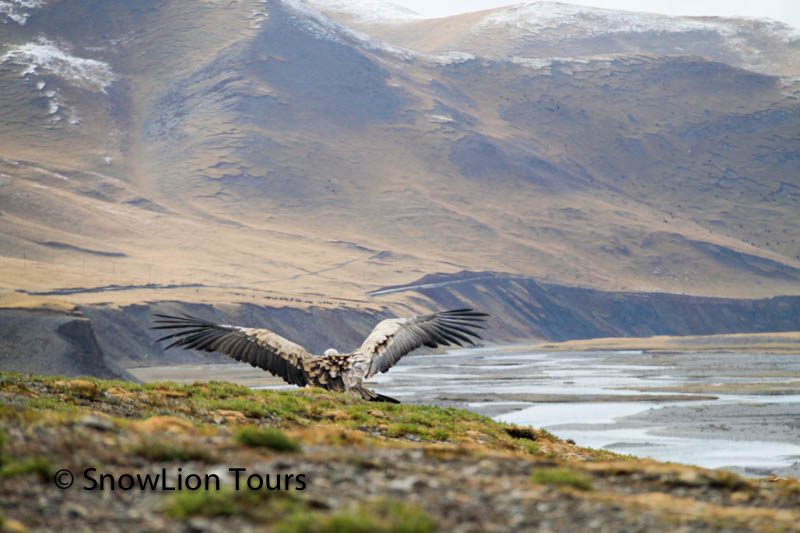
A big Vulture flying over the mountains in Tibet
A list of Birds:
- Great Black-headed Gull
- Black-headed Gull
- Blue Hill Pigeon
- Tibetan Lark
- Alpine Accentor
- Tibetan Snowfinch
- Tree Sparrow
- Asian House Martin
- Carrion Crow
- Oriental Turtle Dove
- Eastern Great Rosefinch
- Pale Sand Martin
- Black Necked Crane
- Grey-backed Shrike
- Plain Mountain Finch
- Hume’s Leaf Warbler
- Collared Dove
- Common Raven
- Barn Swallow
- Brown-headed Gull
Wildlife Conservation on Tibetan High Plateau
There are almost 80 natural reserves and sanctuaries on the Tibetan plateau so far, but Changthang Natural Reserve, Hoh xil Natural Reserve, Arjin Shan (or “Altun Tagh”) Reserve and three river’s source natural reserve are the dominant terrestrial ecosystem on the Tibet plateau. And these high grassland reserves are directly linking to the pedospheric, atmospheric, and hydrospheric system of the whole Tibet plateau as well as the entire Asia.
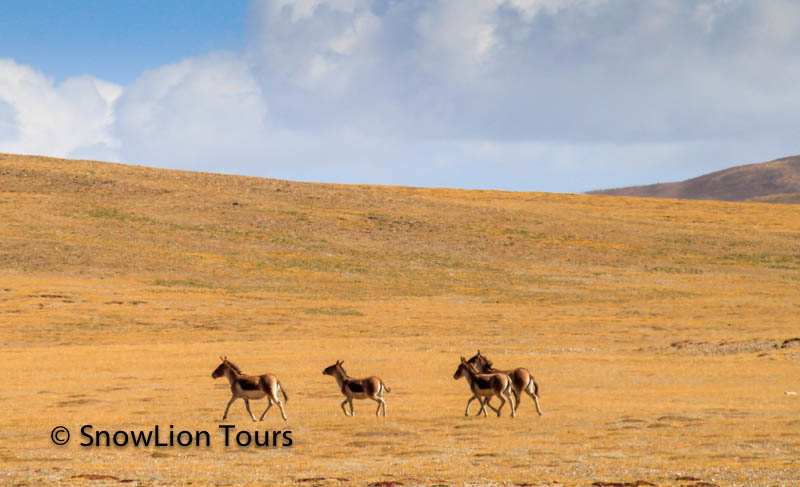
Wild Donkey or Ass on Tibetan Plateau
Changthang Nature Reserve
The Changthang means northern plain in Tibetan, is a massive high altitude plateau stretchering from Jamu and Kashmir in northern India and north into Qinghai province and Xinjiang province. As the highest nature reserve in the world, Changthang has an average altitude of 4800m with high hills and plains interspersed by mountains over 6000m high.
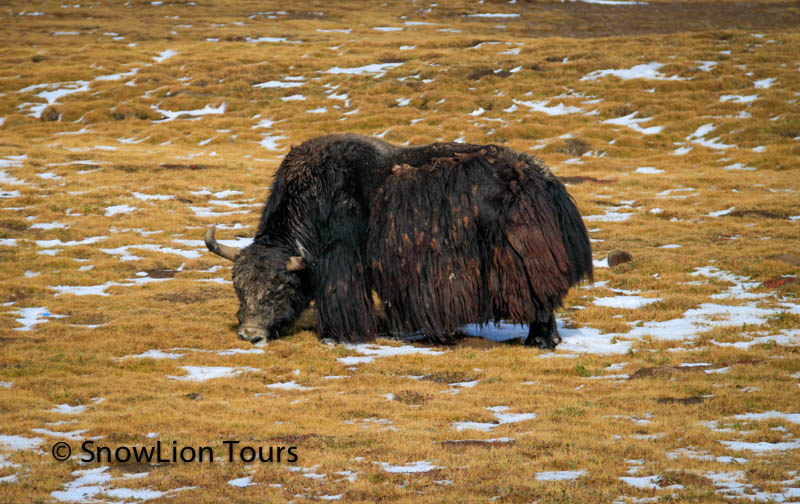
Wild Yak in Changtang Wildlife Sanctuary
Changthang high nature reserve hosts some of last remaining wild ungulates: Wild yak, Tibetan wild Ass, Tibetan Antelope, Blue Sheep, Argali, and Gazelle. And plateau’s large predators: Snow Leopard, Wolf, Lynx, and Tibetan Brown Bear. And the bottom of food chain are a large number of Pikas.
Hoh Xil Nature Reserve
Hoh Xil or Kekexili, also called Achen Ganggyab in Tibetan. Located in the northeast extremity of Tibet plateau, is the largest and highest nature reserve in the world. This extensive area of high altitude plateau nature reserve is situated an average of 4800m high from sea level. Hoh Xil stretching between two largest and highest mountain ranges in Tibet, Tanggula and Kunlun mountains chains. The Hoh Xil nature reserve was listed among “World Heritage Sites” as the largest and highest plateau in the world.
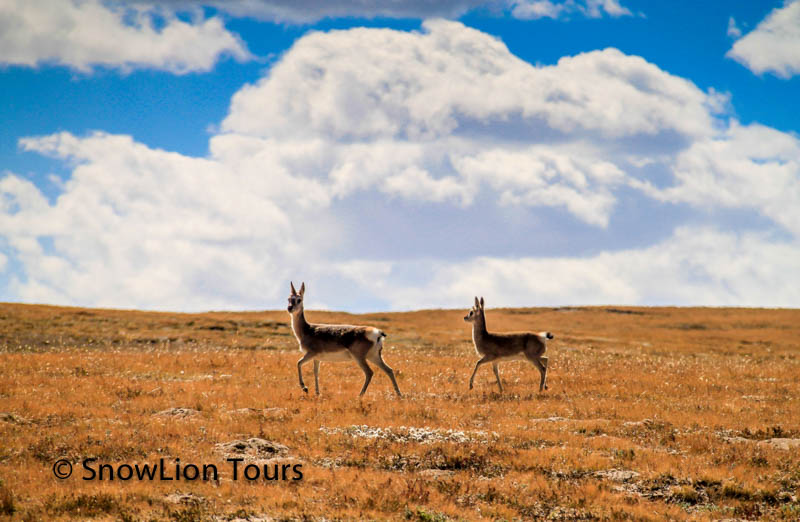
Tibetan Antelopes are one of the endangered wild species on the Tibetan Plateau
Despite of extremely cold weather, Hoh Xil is home to about 230 species of wild animals. More than 20 of them are under national state protection, Wild Yak, Tibetan Wild Ass, Tibetan Antelope and Tibetan Brown Bear.
Three River’s Source Nature Reserve (Sanjiangyuan)
Source of three river’s Nature Reserve is also called Sanjiangyuan in Chinese, is an area of nature reserve on Tibet plateau and which contains the headwaters of three great rivers in Asia: The Yellow, Yangtzi and Mekong.
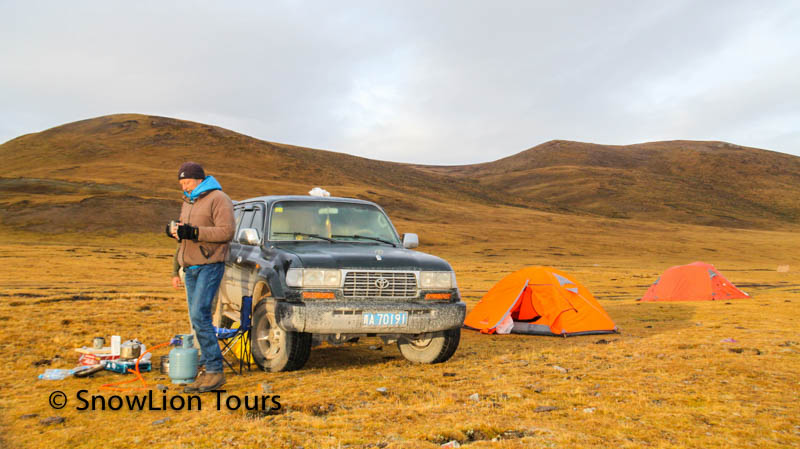
Wildlife Photographer is working on his photography project in Tibet
Source of three rivers reserve covers the area of southern and eastern Qinghai province and situated between the eastern extension of two huge mountain ranges, Tanggula and Kunlun range. Yuhsu and Golok are the core area of source of three rivers reserve. Source of three rivers reserve is also home to a large number of wild animals like Wild Yaks, Tibetan Antelopes, Gazelle, Wild Ass. Argali and Snow Leopard and and other wildlife.
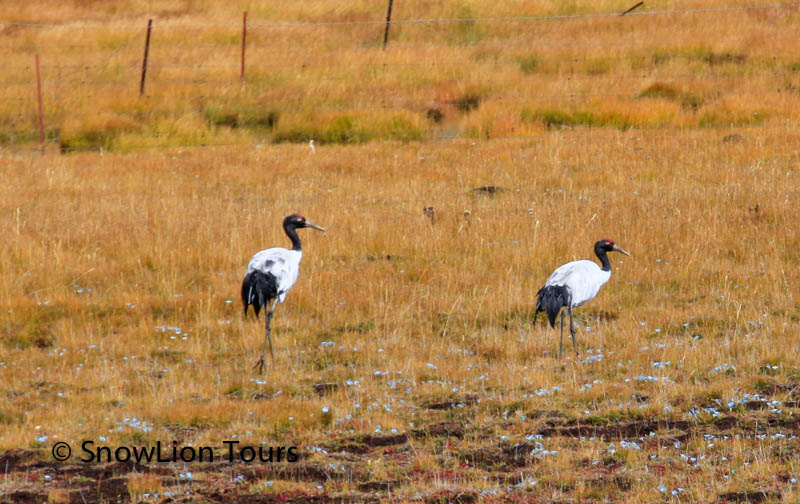
Black-necked Crane on Tibetan Plateau
Altun Shan National Nature Reserve
Altun Shan Nature Reserve is an elongate triangular area on the southern edge of Taklamakan desert and on the northern edge of Tibetan plateau, the reserve measures 800km from east to west and 200km from north to south. Altun Shan Nature Reserve also has an average altitude of 4500m and due to its arid location, the reserve has different climate to different areas within the reserve, some part of the reserve is cold desert climate and some part is polar climate because of its high elevation.
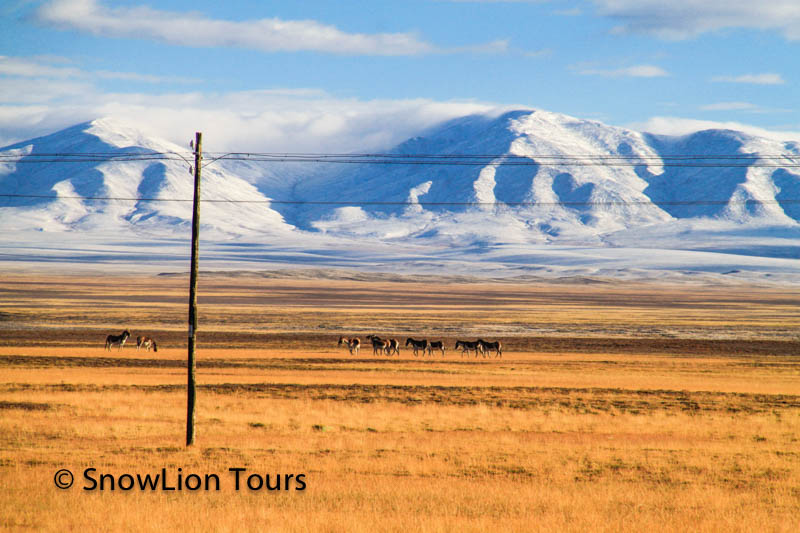
Wild Donkeys or Asses on the grassland in Tibet
Altun Nature Reserve hosts a large range of animal species like Wild Yaks, Tibetan Antelope, Tibetan Wild Ass, and also has a small number of Dholes.
Current Statues
The awareness of protect wildlife and environment is a moral responsibility of each and everyone in this world. It therefore goes without mentioning the ecology of Tibet plateau and any disruption or negative impact of the fragile ecology of Tibet plateau would cause global consequences.
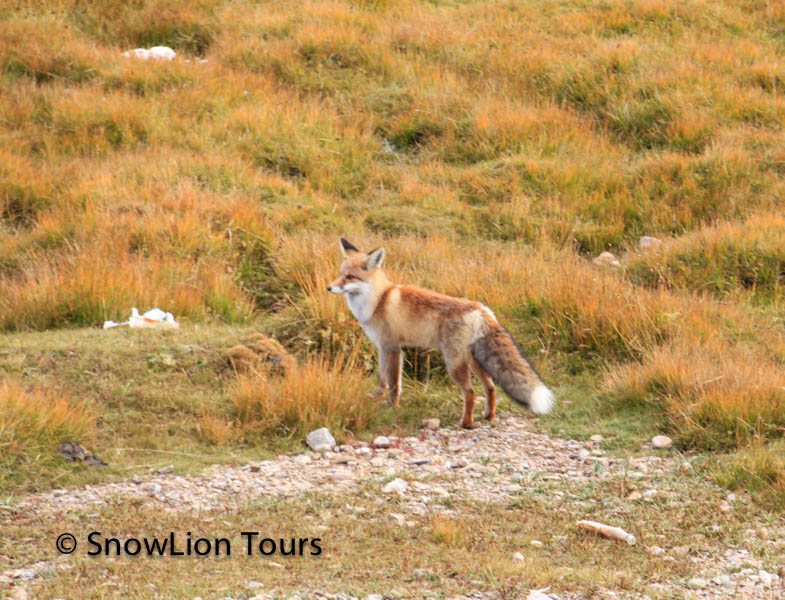
Tibetan Fox
Over hunting of Tibetan antelopes and wild yaks in the end of 20thcentury unbalanced the whole Tibetan plateau ecological system and large construction site like buildings and highways and roads are also the main cause of number of the wildlife on Tibet plateau decreasing day by day.
Wildlife Conservation Through Ecotourism
Tourism is becoming a very popular in Tibet nowadays because of the improvement of transportation in Tibet, it is for sure that the ecotourism is a successful approach for the conservation of wildlife on Tibet plateau according to our pass experience. We (Snowlion tours) promised to our business with locals and made most of the benefits to the locally owned accommodations and restaurant.
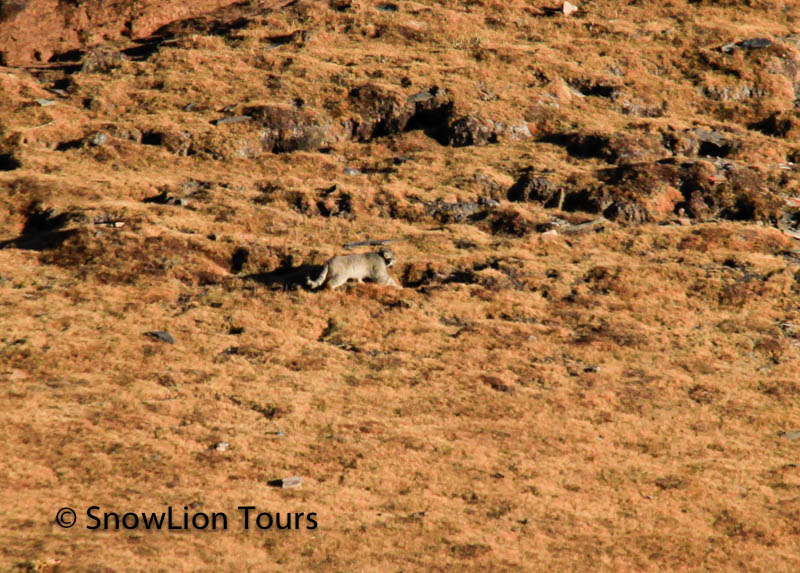
Pallas’s cat (maybe, not so sure) is endangered cat in the world
We arrange varieties of wildlife tours including wildlife safari, bird watching tours, wildlife research tours, wildlife photography tours, wildlife protecting programs. etc.
If you are interested in wildlife tours in Tibet, please take a look at our special design tour here.
